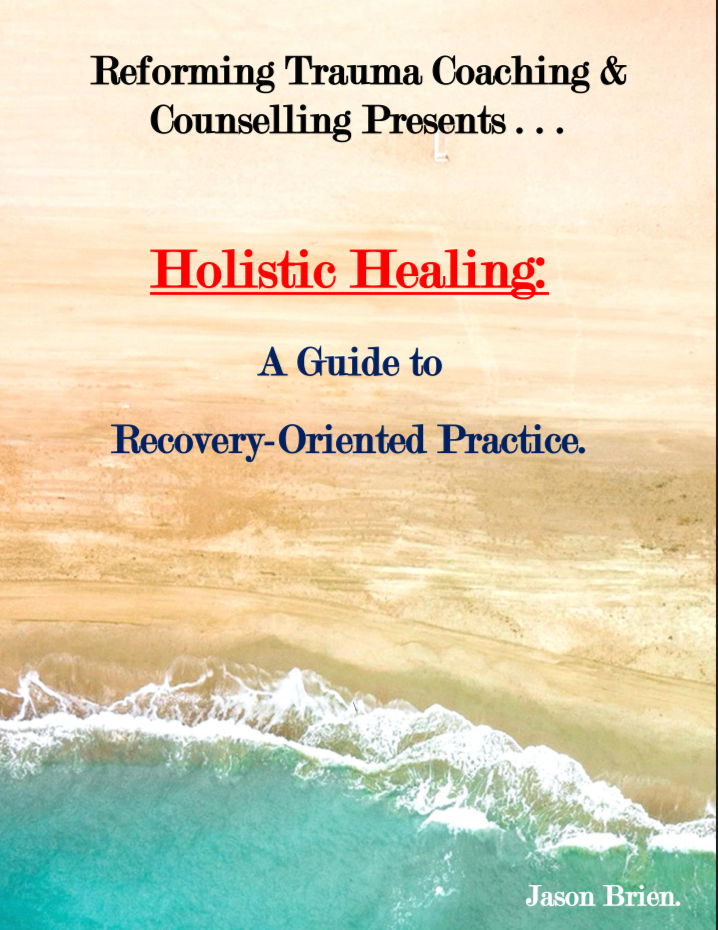Holistic Healing: A Guide to Recovery Oriented Practice.

HOW TO ORDER?
Once payment has been made through one of the below payment methods, please email me a screenshot or image of the payment receipt - reformingtraumacoaching@yahoo.com
I will reply back to your email with an attached PDF copy of your purchase order within 7 days (168 hours) of receiving the payment receipt.
If you choose to purchase multiple e-books, please specify in your email which e-books you would like to purchase.
The screenshot or image of your payment receipt should reflect your purchase order. For example, if the payment receipt only shows a payment for 100PHP or $3AUD, and you request two e-books, I will email you to clarify which single e-book you would like to purchase or to clarify if you will make an additional payment for the subsequent e-book/s.
EXTREMELY IMPORTANT: If you are waiting for an email from Reforming Trauma Coaching & Counselling, please check your junk/spam folders regularly.
HOW TO MAKE PAYMENT?
All PDF e-book's are 100PHP or $3AUD each depending on the country you reside in.
Philippines - 100PHP
GCash:
Account Name: Analiza Mose.
Account Number: 09638228024
Paymaya:
Account Name: Analiza Mose
Account Number: 09638228024
Bank of Philippine Island (BPI):
Account Name: Analiza M. Mose
Account Number: 1439132791
Australia -$3AUD (To be paid in AUD currency).
PayPal: https://paypal.me/reformingtraumacoach?country.x=AU&locale.x=en_AU
Bank-to-Bank Transfer or Osko:
Bank Name: Westpac Bank.
Account Name: Jason Brien.
BSB: 734292
Account Number: 654681
Payid:
Name: Jason Brien
Mobile Number: 0400 546 129
International Countries - $3AUD (To be paid in AUD currency).
PayPal:
https://paypal.me/reformingtraumacoach?country.x=AU&locale.x=en_AU
Western Union or Bank-to-Bank transfer:
Bank Name: Westpac Bank.
Account Name: Jason Brien.
BSB: 734292 - SWIFT code: WPACAU2S
Account Number: 654681
Street Address: 15 Housman Place,
City; Calamvale, QLD, Australia,
Postcode: 4116
Phone number: +61 400 546 129
Holistic Healing: A Guide to Recovery Oriented Practice - 10 chapters - 101 pages.
Chapter 1: Understanding Recovery.
-Introduction.
-Exploring the Concept of recovery.
-Historical Perspective on mental Health Recovery.
-The Evolution of Recovery-Oriented Practices.
-Conclusions.
-Chapter References.
Chapter 2: Principles of Recovery Oriented Practice.
-Introduction.
-Person-Centered Approach.
-Hope and Optimism.
-Empowerment and Choice.
-Holistic Perspective.
-Collaborative and Inclusive strategies.
-Conclusions.
-Chapter References.
Chapter 3: The Role of Culture and Diversity in Recovery.
-Introduction.
-Cultural Competence in Recover-Oriented Practice.
-Addressing Stigma and Discrimination.
-Tailoring Approaches to Diverse Populations.
-Conclusions.
-Chapter References.
Chapter 4: Building Therapeutic Relationships.
-Introduction.
-Importance of Trust and Rapport.
-Communication Skills in Recovery-oriented Practice.
-Fostering a Supportive and Safe Environment.
-Conclusions.
-Chapter References.
Chapter 5: Assessment and Goal Setting.
-Introduction.
-Recovery Oriented Assessment Tools.
-Collaborative Goal Setting with Individuals.
-Monitoring and Adjusting Goals.
-Conclusions.
-Chapter References.
Chapter 6: Interventions and Strategies.
-Introduction.
-Evidence-Based Practices in Recovery-Oriented Care.
-Integrating Peer Support
-Promoting Wellness and Resilience.
-Conclusions.
-Chapter References.
Chapter 7: Involving Families and Support Networks.
-Introduction.
-Recognizing the Role of Families and Friends.
-Strategies for Engaging and Collaborating with Support System.
-Addressing Family Dynamics in Recovery.
-Conclusions.
-Chapter References.
Chapter 8: Challenges and Barriers.
-Introduction.
-Identifying Common Challenges in Recovery.
-Strategies for Overcoming Barriers.
-Advocacy and System Change.
-Conclusions.
-Chapter References.
Chapter 9: Recovery in Various Settings.
-Introduction.
-Recover-Oriented Practice in Inpatient Settings.
-Community-Based Recovery Support.
-Transitioning to Independent Living.
-Conclusions.
-Chapter References.
Chapter 10: Professional Self-Care and Burnout Preventions.
-Introduction.
-Importance of self-Care in Recovery-Oriented Practice.
-Recognizing and Addressing Burnout.
-Building a Supportive Work Environment.
-Conclusions.
-Chapter References.